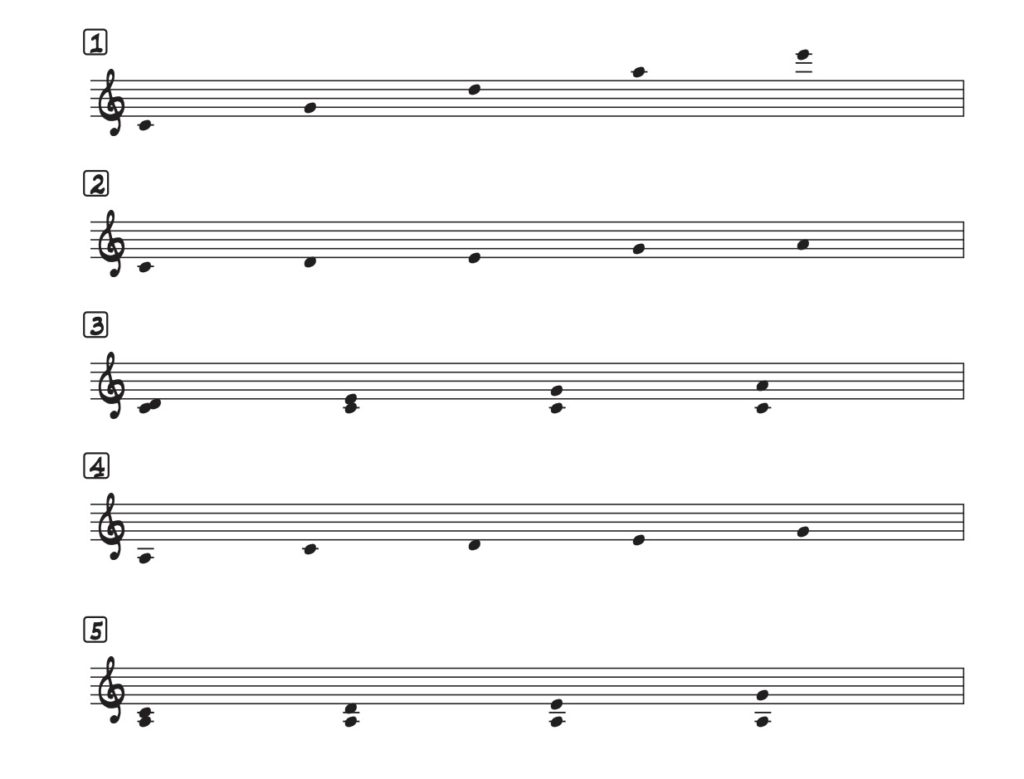🇫🇷 → pentatoniques : les bases

The term “pentatonic” comes from the Greek language: the prefix penta-, “five,” and the word tonos, “tone,” are associated to bring forth the idea of a five-tone scale.
There are of course many five-tone scale possibilities within the twelve-tone equal temperament system. We’ll focus on the most common pentatonic scale here and call it the “global” pentatonic¹ (this particular scale is indeed encountered in the musics of many cultures around the world).
[1] The global pentatonic is based on a succession of ascending fifths: C G D A E.
[2] Reordered within the range of a single octave, we have: C D E G A.
[3] The intervals formed by the tones of this scale relative to its root (C) are as follows:
- a major second between C and D;
- a major third between C and E;
- a perfect fifth between C and G;
- a major sixth between C and A .
Since all the intervals in this scale are major (except the perfect fifth), it is often referred to as the major pentatonic. What I call the scale’s “formula,” based on Arabic numerals² representing its scale degrees (as opposed to Roman numerals commonly used to represent chords that are built on each scale degree), is: 1 2 3 5 6.
[4] Just like the diatonic seven-note major scale (C D E F G A B), the major pentatonic’s relative minor scale can be built by playing all the notes that comprise the major pentatonic, beginning on the tone located a minor third below the latter scale’s root: A C D E G.
[5] The intervals formed by the tones of this new scale relative to its root (A) are as follows:
- a minor third between A and C;
- a perfect fourth between A and D;
- a perfect fifth between A and E;
- a minor seventh between A and G.
Since all the intervals in this scale are minor (except the perfect fourth and fifth), it is often called the minor pentatonic. Its “formula” is: 1 b3 4 5 b7.
To sum up, here are the important formulas again below (accompanied by examples with the note C as the tonic in both cases, for ease of comparison):
| Major pentatonic | 1 2 3 5 6 | C D E G A |
| Minor pentatonic | 1 b3 4 5 b7 | C Eb F G Bb |
Notes
¹ This terminology is used by Michael Hewitt in his book Musical Scales of the World (see Hewitt 2013).
² More accurately speaking, these are the numerals commonly used in Europe that stem from the Hindu-Arabic numeral system.
References
Hewitt, Michael. “Section 5: Pentatonic Scales.” In Musical Scales of the World, 125-134. The Note Tree, 2013.

